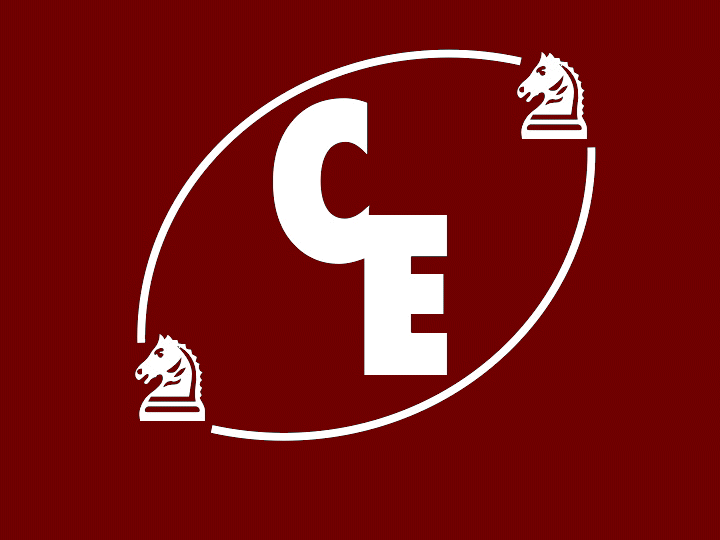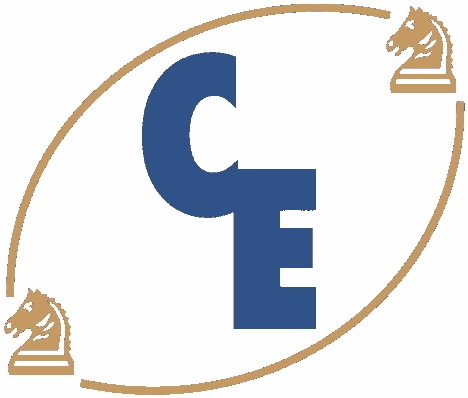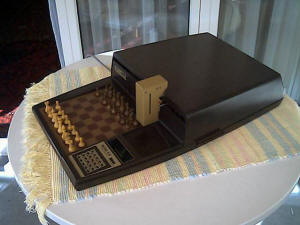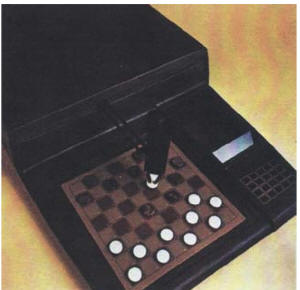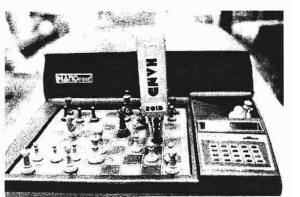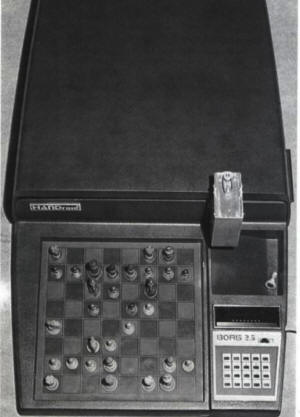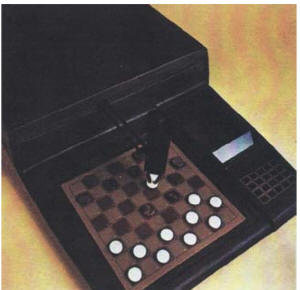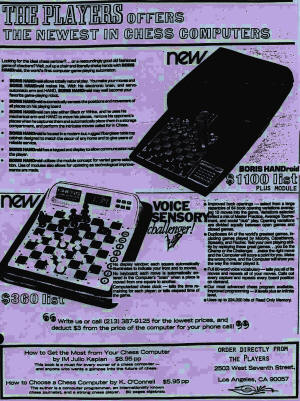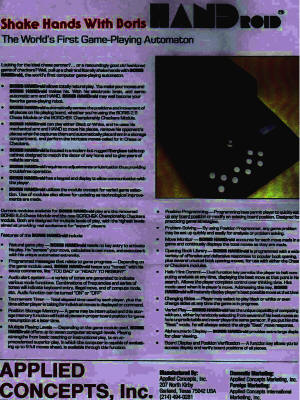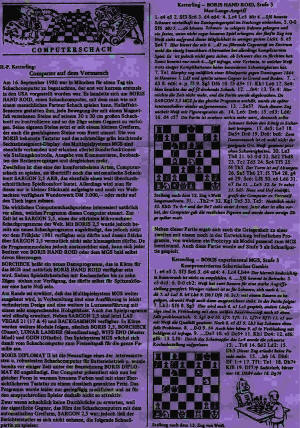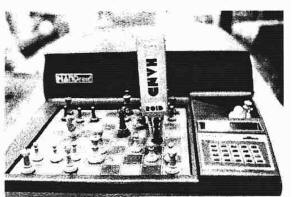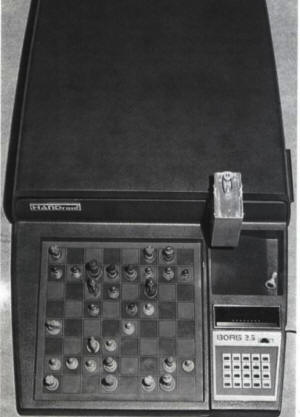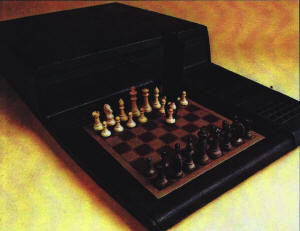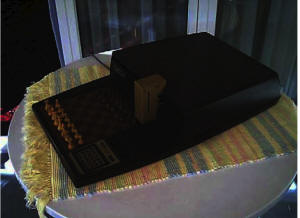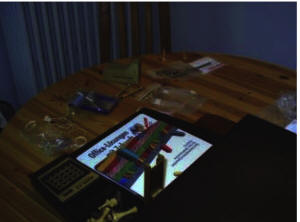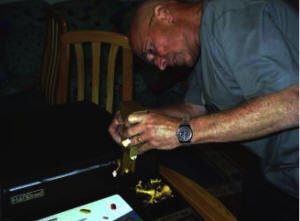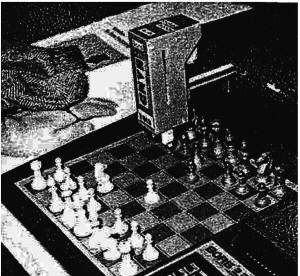In the last century, at the
beginning of the eighties, I worked as a gardener for
the Siemens Company in Zurich. There I met a lot of
technicians and became friends with the deputy manager
who maintained good contacts with a subsidiary of
Siemens, Video Sonic/Rexton
AG. This company represented the company Fidelity Electronics from
Miami (USA) in Swiss. They imported several models of their chess
computers.
The deputy manager of Siemens brought me into contact with the
managers of the purchase department who were responsible for the
import of the Fidelity chess computers. Because of this, I bought
there my first chess computer, a Fidelity Chess Challenger 7.
My
interest for chess computers increased, also encouraged by all the
good contacts with the employees of Video Sonic/Rexton. Soon, I
bought all the available Fidelity computers of that time, and in
1980 I discovered that their strongest model was the Chess
Challenger Sensory Voice.
I noticed that Fidelity’s competitor, the
company Applied Concepts from Texas (USA), already had come out with
a new chess computer, the Sargon 2.5 MGS (Modular Game System) which
was at least equally strong as the Sensory Voice.
Applied Concepts
claimed that their Sargon was the strongest chess computer available
on the market.
A few days later, at Siemens, I kept my eye on an advertisement in
which a colleague offered the Sargon for sale, because the computer
was much too strong for him to play with. I didn’t hesitate for a
moment and bought his computer immediately. In this way, I came into
possession of the two strongest chess computers of that time.
Because I was also interested in their new small travel model, the
Boris Diplomat, I contacted the importer of Applied Concepts in
Zurich, a company called Pool-Tec AG. Some days later, I visited
this company.
I had a chat with one of their representatives and I told him that
Fidelity claimed their Sensory Voice as the strongest available
chess computer ever made. The representative encouraged me to test
the Sensory Voice with the Sargon 2.5 with special positions and
tournament games to find out who really spoke the truth about their
claims for the strongest computer. After many tests, the Sargon
seemed to be the strongest one.
Two years later, in 1982, I visited
Pool-Tec again and saw two exactly identical chess robots standing
there in a corner, that both had an grasping arm to do their moves
completely independently.
I was totally fascinated and asked the
representative if they were for sale. He told me that the two
computers were chess robots, named Boris HANDroid and that they were
not for sale due to technical reasons. I told the salesman that I
would love to buy one of them, in fact I almost begged the man to
sell me one of the robots. He told me just to wait for a while, but
a few days later, he called me to say that I could come along to
collect a Boris HANDroid. Of course, I had my ears wide open and
drove to Pool-Tec at once. This is how I became the new owner of
this famous and very rare chess robot.
Fortunately, my retired neighbour, Mr. Ernst Rütti, who used to work
as a technician at the company NCR, has a lot of electrical and
mechanical knowledge. He informed me very well about the working of
the robot’s grasping-arm. Once a year he checks the robot and
repairs broken parts if necessary.
He explained to me that the power force of the arm is driven by
three so-called Servo engines and special gearwheels which are
responsible for the way the robot-arm is moving in a notional X/Y
and Z-axis. With these axes the arm is able to move itself correctly
forwards, backwards, up and down, to the left and to the right to
grab and move the chess pieces.
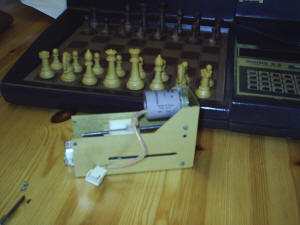
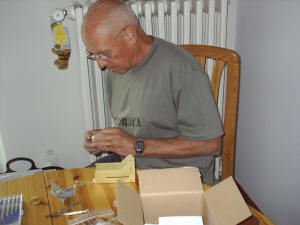
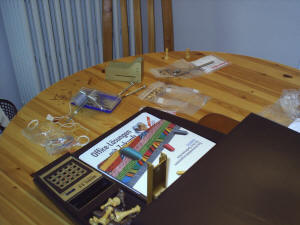

Ernst Rütti repairs the Boris HANDroid!
(Hein Veldhuis, www.schaakcomputers.nl)
Every time you want to play a new game with the robot, the engines
and the gearwheels have to turn the arm in the correct angle. The
arm vibrates for a long time until the angle has been found. This
makes a loud ticking noise, so that it is almost impossible to play
chess after 22.00 hours! Maybe the manufacturer could have improved
this by making a special switch for it. I think the starting
position of the arm could then be found much faster. You can compare
it with a printer who brings the ink-cartridges back in the correct
position automatically.
The biggest wear in the arm is a little snare that connects the
engines with the mechanism of the arm. Not so long ago, I checked it
and noticed that I had to replace it. I know a company in Zurich
which is a specialist in selling parts for modelling and I usually
buy a new one there.
If the robot is no longer able to grab the chess pieces correctly,
then the problem always lies in the mechanism of the arm. In the arm
are two bars which are responsible for lifting the chess pieces up-
and downwards. The bars are driven by the engines, the gearwheels
and the little snare. After a few games, these bars tend to bend
themselves a little and because of this, the HANDroid is not able to
grab the pieces properly anymore. Then I have to manually bend the
bars back to let it work correctly again. That is a nice job for the
real mechanics-lovers, but certainly not for people who are only
interested in playing chess with it. I think this is the main reason
why the Boris HANDroid never appeared on the market.
The same as his cheaper brother, the Sargon 2.5 MGS, the Boris
HANDroid is equipped with the possibility to exchange the program
module. This makes it possible to not only play chess with the
robot, but also other games like draughts. If a new and stronger
module comes on the market, you only have to buy and replace it with
the old one. I don’t believe a draughts module ever appeared,
because the robot had already too many difficulties playing chess
and moving the pieces properly with its arm.
A funny thing to mention is that whenever I win a game, the arm goes
forwards and stops above square e1 for a few seconds and then goes
back to its starting position. It looks as if the robot wants to
shake hands with me...!
Not so funny is the fact that some time ago, I met the
representative of Pool-Tec again, whom I bought one of the two
HANDroids from. At this new encounter, I asked the man what happened
with the other HANDroid. He told me that one year after our first
meeting, he gave the robot to the garbage collector...! I found this
incomprehensible but I think he did regret it very much.
Nowadays, I only play a few games a year with the robot. Due to its
vulnerability for technical troubles, I think the Boris HANDroid
should stay forever in a showcase of a museum. Maybe, some day in
the future, I will lend out the robot for an exhibition in the Swiss
computer museum.
I’m glad that I was able to tell the Selective Search readers my
story of the very rare Boris HANDroid chess robot that should have
been the first available robot with grasping arm on the commercial
market ever.
Unfortunately, it never appeared and it has been a
mystery for years what happened to the machines.
Well, I only know
there were two of them, because I have seen them myself at the Swiss
company Pool-Tec.
Are there any other units left on this planet?
I
don’t know, but I do hope you have enjoyed my story of the HANDroid
of which I’m the proud owner! |
